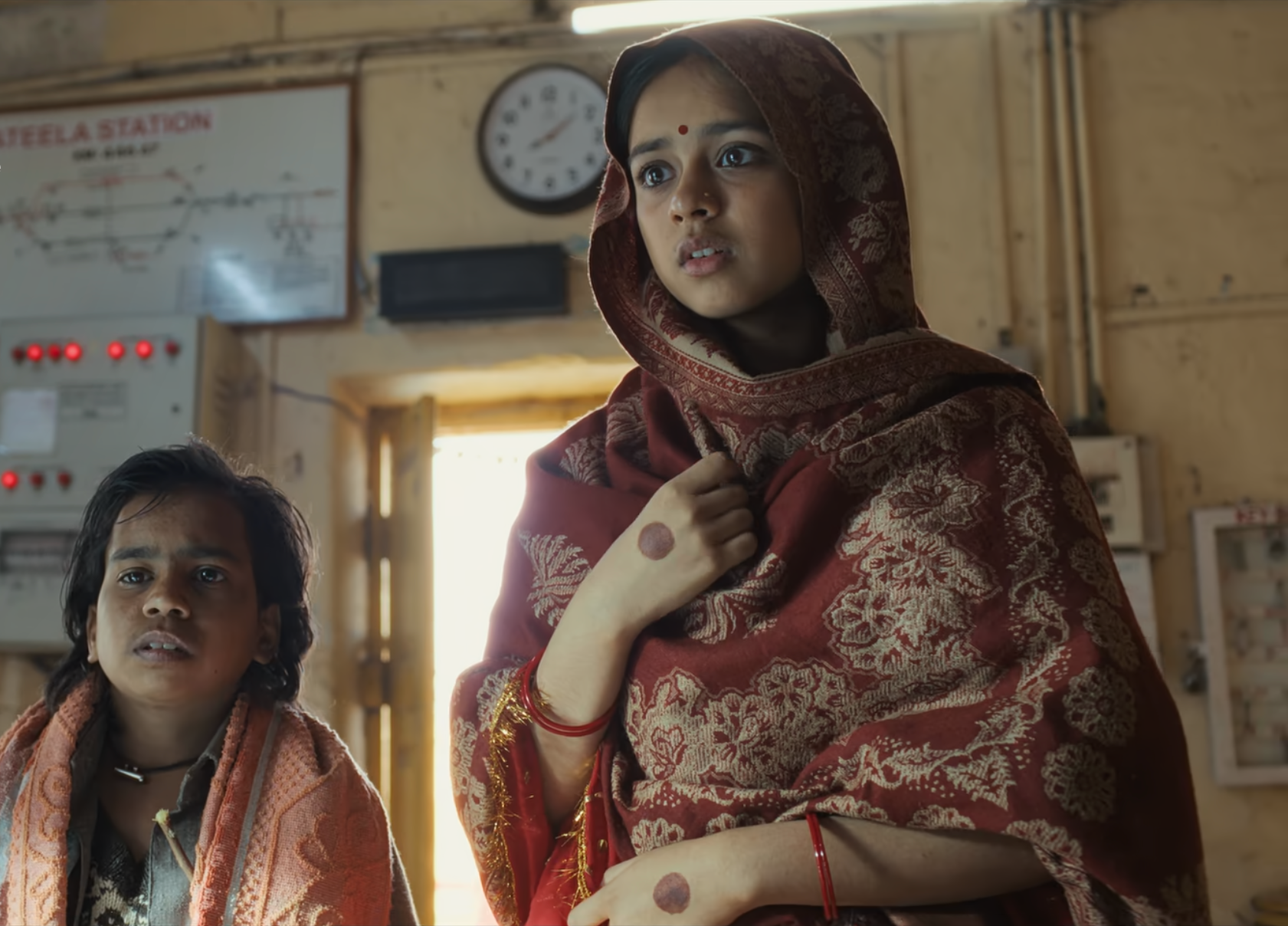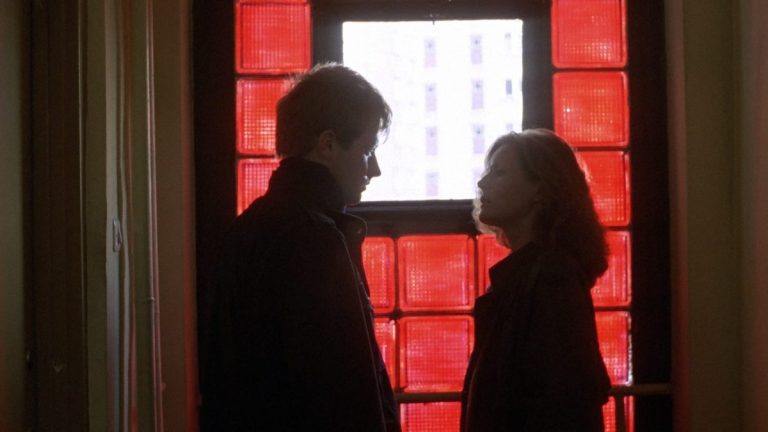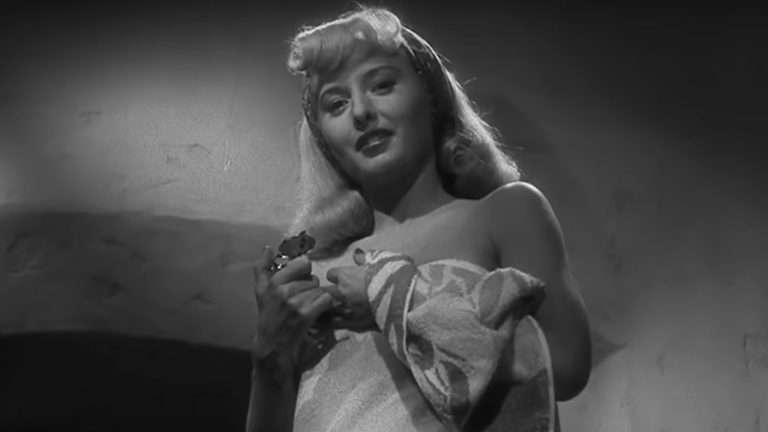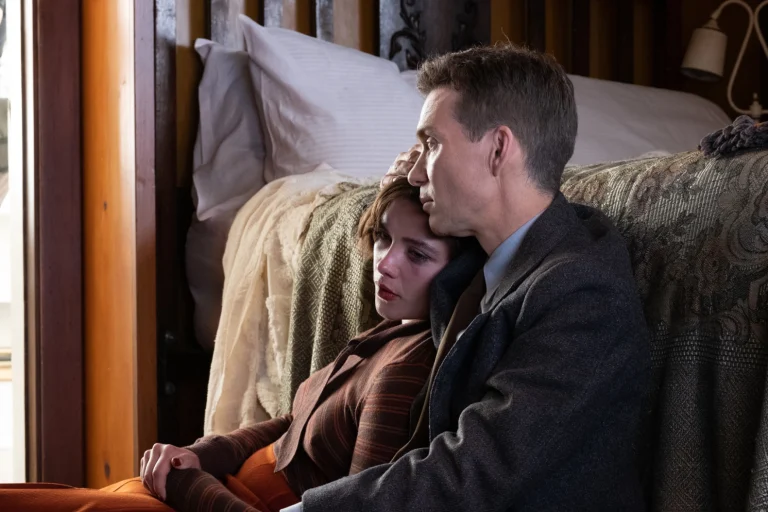Kiran Rao’s 2024 directorial “Laapataa Ladies,” set against the rustic backdrop of fictional Nirmal Pradesh, is essentially a journey of two women toward finding their individuality, agency, and independence. This journey is underscored by the motif of the train and its associated emblems like the station. In doing so, “Laapataa Ladies” channels Indian cinema’s long-drawn penchant for using the train as a dramatic device integral to the narrative. One is reminded of movies like “Dilwale Dulhania Le Jayenge” (1995), “Jab We Met” (2007), “Chennai Express” (2013), and “The Lunchbox” (2013), among many others, where the train becomes a site where strangers meet, conversations happen, and lives change.
Rao’s story begins as two newly-wed women embark on a train journey accompanied by their husbands and in-laws. With their faces veiled by the ghunghat to the point of non-recognition, they are bereft of any individuality or understanding of what the future holds for them. Subsequently, in what constitutes the fundamental confusion driving the narrative, the two brides, virtually indistinguishable from each other, get ‘exchanged’ amidst the commotion inside the train. Their inner journey towards self-reclamation begins only when they get off the train.
Jaya (Pratibha Ranta) gets an opportunity to carve out her own future while Phool (Nitanshi Goel) is stranded at the station, forced to be her own provider and protector. As both the women find the steering wheel of their lives in their own hands for the first time, Phool starts working at a snack stall at the station while Jaya begins to make arrangements to move to Dehradun to pursue higher education. Phool feels empowered working and earning for herself under the care of the wise and disgruntled Manju Dadi (Chhaya Kadam), who opens her eyes to the many ways in which society tricks women into being submissive, voiceless, and all-enduring creatures born with the sole purpose of becoming good and obedient wives.
The recalcitrant Manju Dadi can be seen as a 21st-century reimagination of the ‘Madwoman in the Attic’ trope found in Victorian English novels – she doesn’t fit into any of the roles imposed by society on women, whether it is that of a care-giver or of a pleasure-giver. Much like the ‘Madwoman,’ she lives alone and is feared by people because of her audacious and assertive nature. She has driven her abusive husband and son away for good and has found solace in her own company (and that of her cat).
Left embittered by harsh circumstances, she can now see through the injustice meted out to women by patriarchy. When Phool boasts of her excellent upbringing, she explains to her how women are tricked into chasing the ever-elusive ideal of “bhale ghar ki betiya” (girls from respectable families) so that they may be reduced to serving a utilitarian purpose inside the household. As Phool tells her that she has been taught to cook, clean, sew, and mend, Dadi asks her if she has been trained to be smart and independent. If she had been, she wouldn’t have found herself lost at a railway station.
Rao skillfully deploys satire or humor as a narrative device to highlight the grave issues that plague our society. We, as the audience, find ourselves complicit as we almost catch ourselves with a half-smile on our faces as Ravi Kishan’s Shyam Manohar resorts to sexist humor when he is approached by Phool’s distressed husband, Deepak Kumar (Sparsh Shrivastav).
As he reports that his wife has been lost, Manohar quips, “Kaise bey? Hum itna saal se try kar rahe hain, sasuri kho hi nahi rahi hain!” (What’s your secret? I’ve been trying for years; the wretched one just won’t get lost!). This ties up with the long tradition of misogynistic ‘wife’ jokes that frequently do the rounds on social media and leave middle-aged Indian men in splits wherein the wife is always portrayed as possessive, annoying, and irritating – not as human beings worthy of love and respect but as objects that should rather be lost.

In her interview with The Quint, Rao says that she has been conscious of using satire as a vehicle to drive her point home. The entire movie, in fact, is replete with similar instances where one is forced to reflect on and reconcile with the semantics of a sexist joke designed to disparage women under the disguise of harmless fun.
In another scene, as Deepak frantically looks for his lost wife, he approaches a shopkeeper with a photo of her. This photo, taken on their wedding night and their only photo together, becomes the source of much amusement and laughter. It features the couple standing side-by-side, Phool’s face hidden entirely by her ghunghat. The shopkeeper proceeds to point out that the photo is of no use since the only feature critical to her identity – her face – is not visible. Just then, his own wife enters the scene, bringing tea for him in a burqa. The irony of the situation generates much laughter among the audience but pertinently highlights the loss of identity for Muslim as well as non-Muslim women alike under the social institution of the ghunghat/purdah or the burqa.
In an earlier scene, Jaya complains that the ghunghat, which is at the core of the confusion that forms the premise of the movie, not only restricts the world outside from identifying her but also prevents her from accessing the world outside. The very garment can be read as a political device through which the subjugation and seclusion of women are mandated and reinforced in our society. The ghunghat becomes the location wherein the honor and dignity of the two women supposedly reside.
Paradoxically, it is the same ghunghat that enables Jaya to escape a future of imminent oppression and violence at the hands of her abusive husband Pradeep (Bhaskar Jha) – first when Deepak mistakes her as his own wife and second, when she uses her ghunghat to strategically hide her face at the police station to avoid being found. Thus, in a way, Jaya participates in an act of subversion by using the ghunghat, traditionally an image of oppression, for her emancipation.
Although it begins with the two women losing their ways, “Laapataa Ladies” is all about their search for individual identity and finally finding themselves. The narrative comes full circle towards the end of the movie when the women embark on journeys again, but this time independently, confident about where they want to go and on their own terms: Phool boards a train to Surajmukhi to reunite with her husband while Jaya boards a bus and begins her journey to Dehradun. Kiran Rao’s movie ends with emotional gratification as ordinary women find themselves challenging oppressive gender roles and navigating systemic injustice with resilience.





